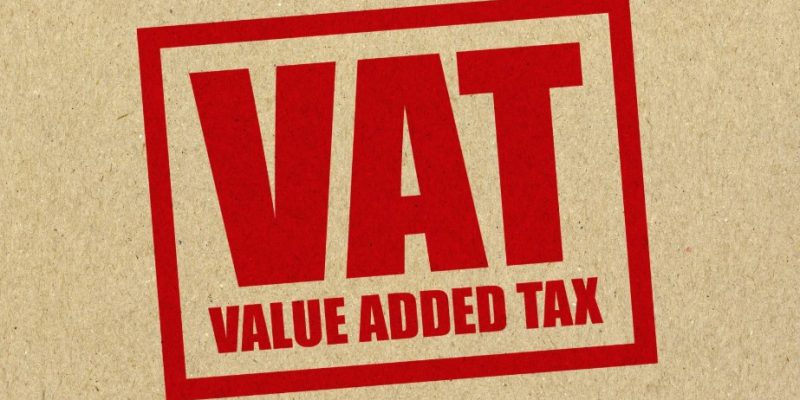
Send Details to Support Your VAT Repayment Claim | What You Need to Include
VAT repayments are a crucial part of financial management for VAT-registered businesses in the UK. To ensure accuracy and avoid delays, HMRC requires specific documentation and information to validate repayment claims.
This guide explains when to send details to support a VAT repayment claim, what documents are necessary, and how to ensure your submission meets HMRC’s standards.
When Should You Send Details to Support a VAT Repayment Claim?

You should only send supporting details to HMRC after receiving a request. Typically, this happens when a VAT Return includes a repayment amount, prompting HMRC to check the figures.
The request usually comes through a formal letter or email from HMRC, which includes a reference number such as CFS, CFSS or CFSRP.
This process helps HMRC verify the legitimacy of the repayment before releasing funds. It is essential that businesses do not submit information without first being prompted by HMRC, as unsolicited submissions may not be processed.
In cases where a business is represented by an agent, that authorised agent can also submit the requested information using the same form. This is valid only if the agent has received a request and is acting within the appropriate authority.
What Information and Documents Do You Need to Provide?
When HMRC asks for further details to support a VAT repayment claim, they require a range of documentation that helps verify the legitimacy and accuracy of the figures reported on the VAT Return.
This information ensures that the business is entitled to the repayment and that the claim aligns with VAT regulations.
Core VAT Information You Must Include
Every submission must include key identifying and financial information. The following are considered mandatory in most VAT repayment cases:
- VAT registration number assigned to the business
- The CFS, CFSS or CFSRP reference number provided in HMRC’s letter or email
- A detailed description of the main business activities
- The date the business began trading, especially relevant if this is the business’s first VAT Return
- The VAT rates applied to business sales, including standard, reduced or zero-rated rates
- Information on any VAT accounting schemes used, such as the VAT Cash Accounting Scheme or the Flat Rate Scheme
- Details of the individual who filled out and submitted the VAT Return
- Names of any software used if the business follows the Making Tax Digital rules
- A comprehensive VAT account that includes totals and breakdowns of sales and purchases
- The ten highest value purchase invoices that include VAT
- Recent bank statements showing transactions related to the VAT claim
These documents allow HMRC to verify that purchases were made for business purposes and that the VAT has been correctly recorded.
Additional Documents Based on Business Circumstances

Depending on the nature of the business and the type of transactions it carries out, HMRC may ask for further documentation. These may include:
- Written authorisation from the VAT-registered customer, allowing up to two other individuals to act on their behalf
- Export sales invoices along with supporting documents showing goods were dispatched outside the UK
- Import VAT documentation for goods brought into the UK
- Hire purchase agreements or lease agreements if the VAT relates to vehicles, machinery or equipment
- Documents supporting the purchase of land or property, which should include:
- A solicitor’s completion statement
- Form TR1 confirming legal ownership
- Proof of the transfer of funds
- Evidence that Stamp Duty Land Tax has been paid
- Official purchase invoices
- Planning references and postcodes of any construction sites if the business supplies construction services
- Sales invoices where a non-standard VAT rate was used, such as a reduced rate for energy-saving materials
- Any other documents the business believes will support the claim, such as correspondence with suppliers or accountants
Providing clear and complete copies of these documents can reduce the chance of delays or follow-up queries.
How Can You Authorise Someone to Act on Your Behalf?
A business can allow another party to act on its behalf when submitting VAT repayment information.
This could be a professional agent, an employee, or a trusted individual like a family member. Authorisation can be granted in several ways, and it is crucial to follow HMRC’s procedures precisely.
The first and most secure method is via a digital handshake. This method allows the VAT-registered customer and the agent to connect through HMRC’s online services and formally agree on access rights.
Alternatively, a business tax account can be used to manage authorisations directly. This online portal gives access to forms and tools necessary for delegating authority to other individuals.
Another method includes using HMRC’s physical authorisation forms, which can be completed and submitted electronically or by post.
Required Consent Details
If a third party such as an employee or family member is acting on behalf of the business, written consent must accompany the VAT repayment documentation. This consent must include:
- The full names and dated signatures of up to two authorised individuals
- The VAT-registered customer’s name, their role within the business, and their dated signature
- A clear statement that the named individuals have authority to represent the business in matters related to VAT repayment claims
These consent documents can be uploaded alongside the other supporting materials through the online form provided by HMRC.
What If You’re Submitting Details for Multiple VAT Periods?

Each VAT period under review must be handled separately. If HMRC requests documentation for more than one VAT period, the business or its agent must complete a new form for each one.
It is not sufficient to submit one set of documents for multiple periods, even if the details are similar.
For every period, businesses must re-enter essential information such as the VAT registration number, business details, and reference number.
All supporting documents relevant to that specific period should be included, ensuring HMRC can independently assess each claim without confusion.
Although this might seem repetitive, it ensures each claim is evaluated on its own merits and helps prevent errors in processing.
How Do You Send Details to HMRC for a VAT Repayment Claim?
Sending the required documents to HMRC must be done through their secure online system.
Businesses need to sign in using the credentials they used when registering for VAT. This ensures that the information is securely linked to the correct VAT account.
For agents, it is necessary to use the agent user ID and password. Agents can only access and submit information for clients for whom they have been authorised.
Once logged in, users can upload files and enter details as prompted by the system. It is possible to save progress partway through the form and return later to complete the submission.
This feature is particularly useful for businesses that need to gather additional documents or verify data.
The online system accepts standard file formats, and documents should be labelled clearly to help HMRC review them efficiently.
Required Login Credentials
| User Type | Login Required |
| Business | VAT registration login details |
| Agent | Agent services account credentials |
| Third Party (with consent) | Business login or access via agent |
Accurate login details and document uploads are key to a smooth submission process.
What Happens After You Submit the VAT Repayment Information?
Once HMRC receives your supporting documentation, they aim to review it within seven working days.
During this time, HMRC will assess the claim against the information provided and determine whether additional clarification is needed.
If the documentation is complete and aligns with the VAT Return, HMRC may approve the repayment without further correspondence.
However, if any part of the submission is unclear, missing or inconsistent, HMRC may contact the business or agent for further details.
It is important to monitor the communication channels used during the original submission, including email and post, in case HMRC requests more information.
In cases where no response is received within seven working days, businesses are encouraged to contact HMRC using the telephone number provided in the original letter or email.
Timely follow-up helps avoid unnecessary delays and ensures the claim is not left unresolved.
What Are the Common Mistakes Should You Avoid When Sending VAT Repayment Details?

Avoiding errors when submitting VAT repayment support documents is essential to ensure a smooth process with HMRC.
Many businesses unknowingly make mistakes that delay repayments or trigger additional scrutiny. Understanding the most common pitfalls can help businesses and agents prepare accurate and complete submissions.
1. Incomplete or Missing Documentation
One of the most common reasons for a delayed VAT repayment is submitting an incomplete package of documents.
HMRC has specific requirements, including VAT registration details, the top 10 high-value purchase invoices, detailed VAT account information, and relevant bank statements.
If any of these are omitted, HMRC is likely to pause the repayment process until the missing documents are received.
2. Incorrect Reference Numbers
Each HMRC request is tied to a unique reference such as a CFS, CFSS, or CFSRP number.
Entering this reference incorrectly, or using a reference from a previous request, can cause the system to misroute your submission.
Always double-check that the reference on your form exactly matches the one provided in the HMRC letter or email.
3. Poor Quality Document Uploads
Scans or photographs that are blurry, cropped, or include missing pages can significantly slow down HMRC’s review process. Files must be high-quality, legible, and appropriately named.
Avoid submitting combined documents that are difficult to navigate, and ensure that each document is complete and easy to understand.
4. Combining Multiple VAT Periods
Each VAT repayment period under review must be supported with a separate form and set of documents.
Attempting to submit information for multiple periods in one go is a common error and can result in processing delays. Treat each VAT period independently to stay compliant with HMRC’s requirements.
5. Lack of Proper Authorisation
If someone other than the VAT-registered individual is submitting the claim, written authorisation is mandatory.
Submitting a claim without uploading this consent can lead HMRC to reject the submission. Ensure authorisation forms include all required signatures and clearly state the representative’s authority.
Avoiding these mistakes not only expedites the VAT repayment process but also strengthens your overall compliance with HMRC’s regulations.
Conclusion
Providing complete and accurate information is essential when responding to HMRC’s request for VAT repayment support.
Missing documents or incorrect data can result in delays, reviews, or even rejections of claims.
Businesses and agents must ensure every form, invoice, and declaration matches HMRC’s requirements for faster resolution and compliance.
FAQs About VAT Repayment Claims
What is the CFS or CFSRP reference number used for in VAT claims?
The CFS, CFSS or CFSRP reference number is a unique identifier provided by HMRC when they request additional information to support a VAT repayment claim. It helps HMRC link your documents to the correct case.
Can a business submit VAT repayment details without an agent?
Yes, businesses can submit the required documentation directly through the HMRC portal using their VAT registration login credentials.
How should I organise my documents for HMRC’s VAT check?
Group your documents logically—purchase invoices, bank statements, and VAT returns—clearly labelled and legible. Use PDFs or standard formats when uploading.
Do digital invoices qualify as valid VAT claim documents?
Yes, HMRC accepts digital invoices, provided they contain all necessary VAT details including VAT number, rate, and total.
What is the deadline to respond to HMRC’s request for VAT repayment support?
While no fixed deadline is mentioned, it is recommended to respond promptly—ideally within a week—to avoid delays in your repayment.
Are there VAT schemes that require additional documentation?
Yes, schemes like the VAT Cash Accounting Scheme or the Flat Rate Scheme may require further clarification or documents outlining how VAT was calculated.
Can I appeal if my VAT repayment claim is rejected?
Yes, businesses can appeal a rejected claim through HMRC’s review and appeals process, especially if the rejection was due to a misunderstanding or missing documentation.





